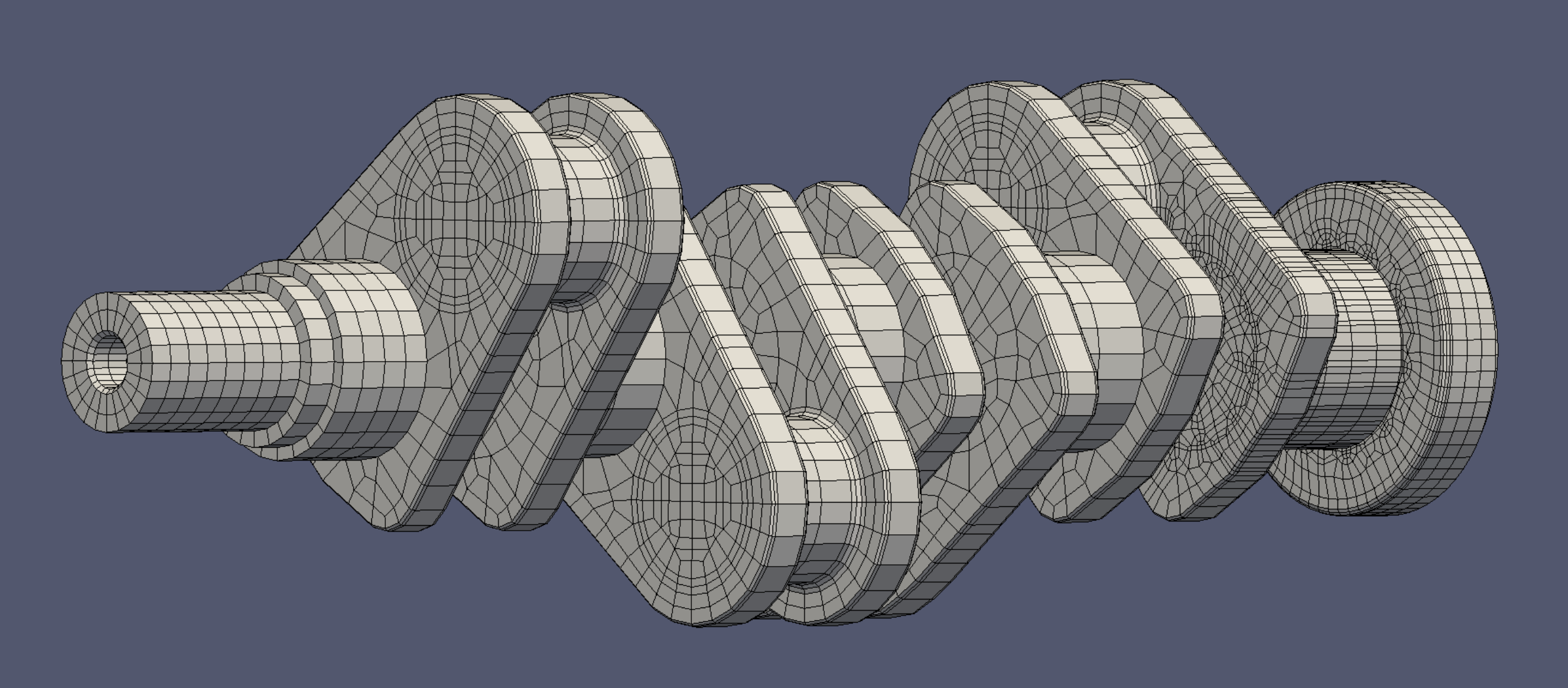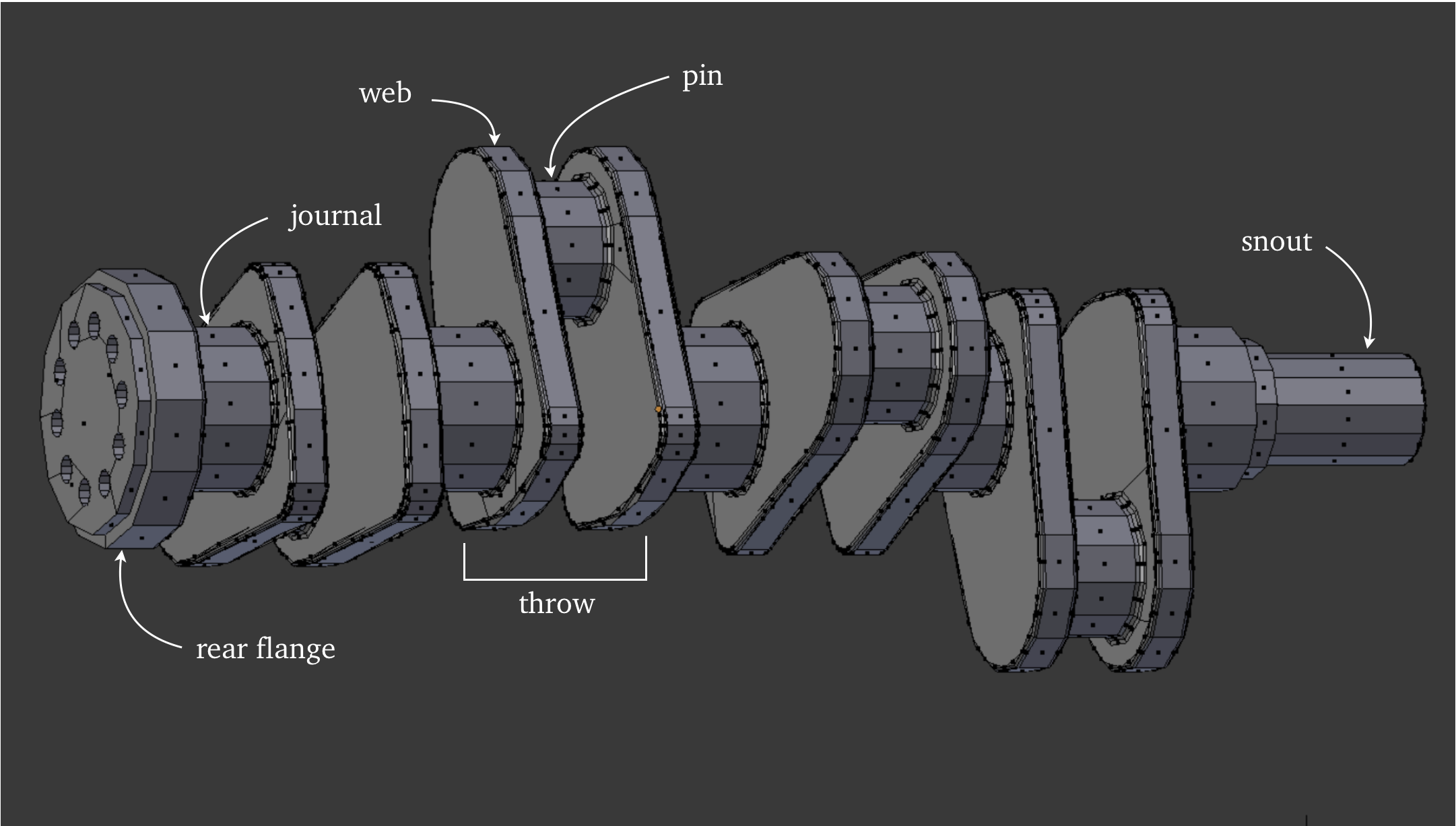
Demo 18
This object is a crankshaft; the model can be found in the INRIA model repository as a .mesh file, and is opened in Gmsh. It is saved as a .stl file and imported into Blender. Its title is “crank3D,” and it is in the Mechanical section of the repository (See References). The usual Tris-to-Quads and Partial Dissolve commands are given.
This object is a crankshaft; the model can be found in the INRIA model repository as a .mesh file, and is opened in Gmsh. It is saved as a .stl file and imported into Blender. Its title is “crank3D,” and it is in the Mechanical section of the repository (See References). The usual Tris-to-Quads and Partial Dissolve commands are given.
A cutaway view of the back of the rear flange, showing bottomed hole construction.
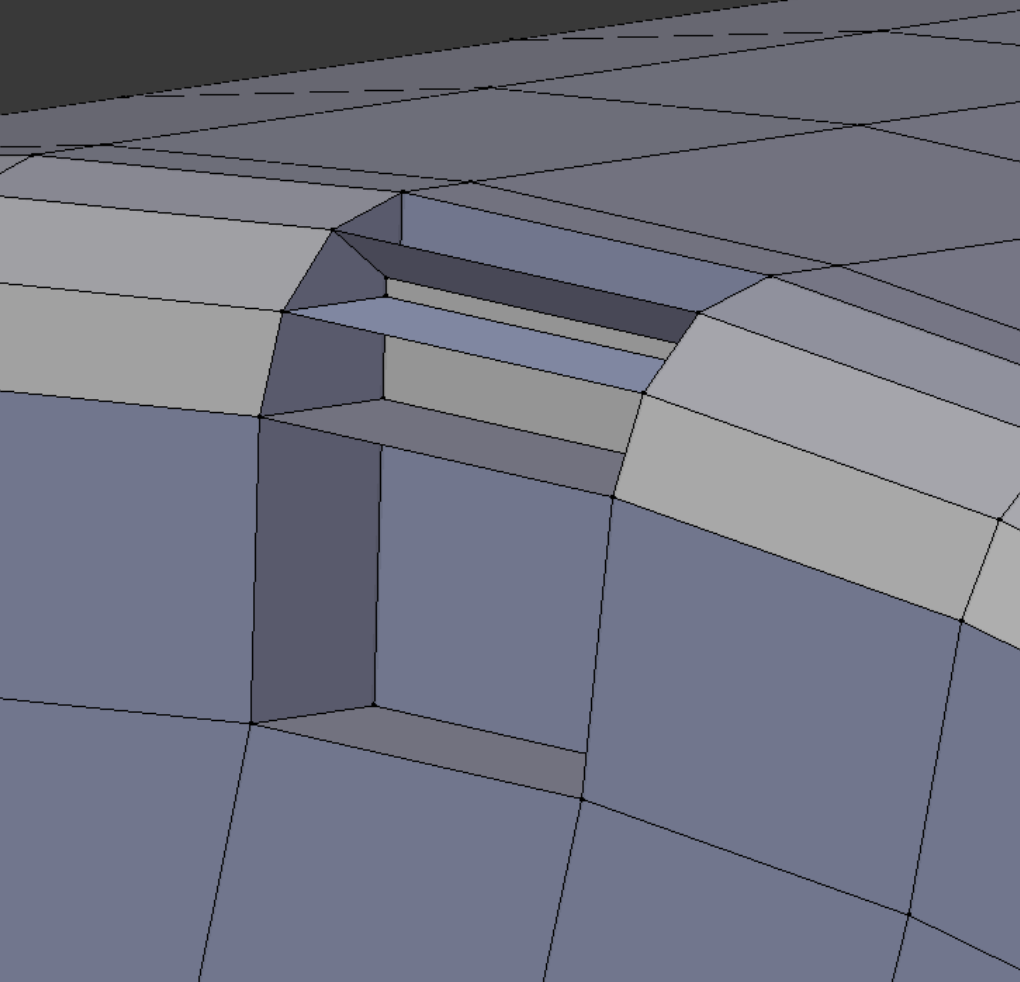
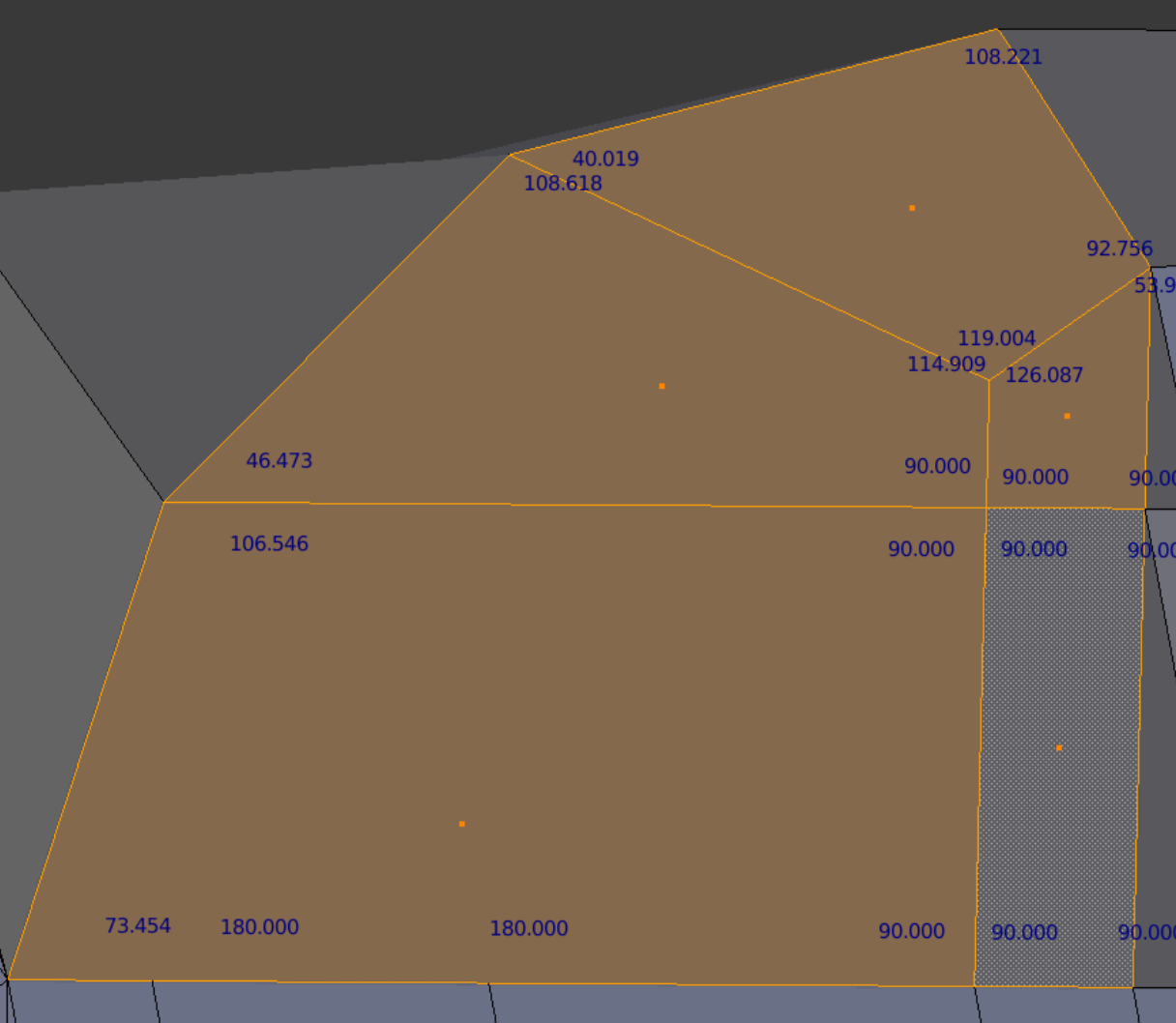
The division plate faces for the outside fillet on the back end of the rear flange are shown above left. This section is made separately from the rest of the flange, using an array, then appended to the waiting holed flange subassembly. The right view shows the fillet after installation, with a few faces removed for inspection.
The first section of the three-part inside pin fillet has a very shallow angle, (green arrow left), which means an edge circle must be adopted to digest it (green arrow right). The intermediate fillet (orange arrow left) could have been handled internally, but providing an external circle (orange arrow right) improves the associated angles.
The rear flange has a design complication: as shown right, the bolt circle is the same diameter as the journal OD. The complication consists in a lack of axial space to taper the elements between these two circles. We can still make the elements as required; however, it introduces extra constraints on the hole bottoms and the surrounding edge design.
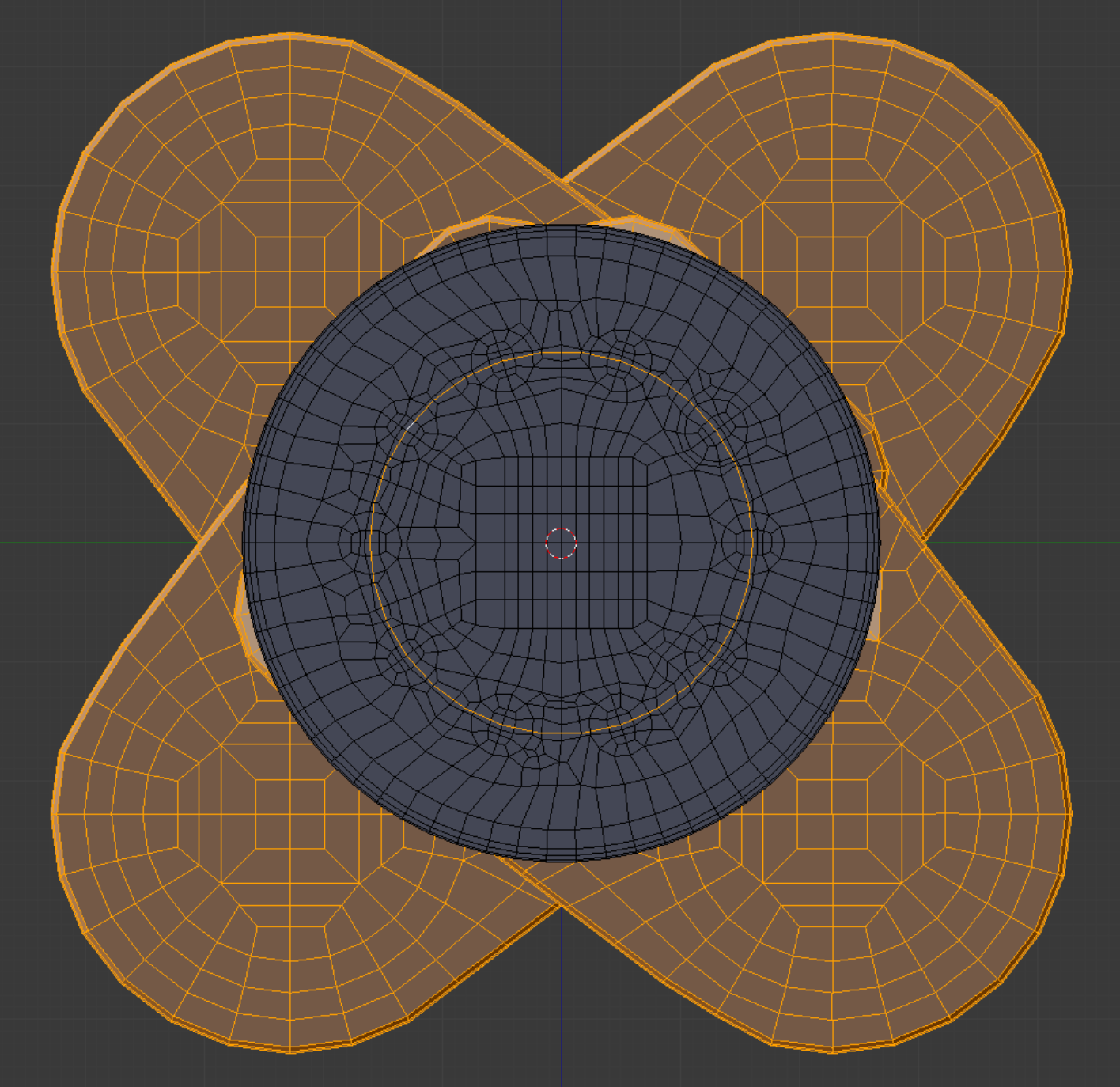
The quality for the Scaled Jacobian attribute is shown for the completed crankshaft. With a minimum value of 0.525, the quality level meets Verdict standards.
The final mesh contains 25,307 elements and 30,470 nodes. The original model was built with 12-division circle resolution. During the creation of the mesh, we upgraded circles and arcs to mostly 24-division resolution, with the circumference of the rear flange boasting 66-division resolution.
The journals would of course have inside fillets, but the representation on the original model was difficult to interpret, and for this exercise we decided to ignore them.
The journals would of course have inside fillets, but the representation on the original model was difficult to interpret, and for this exercise we decided to ignore them.
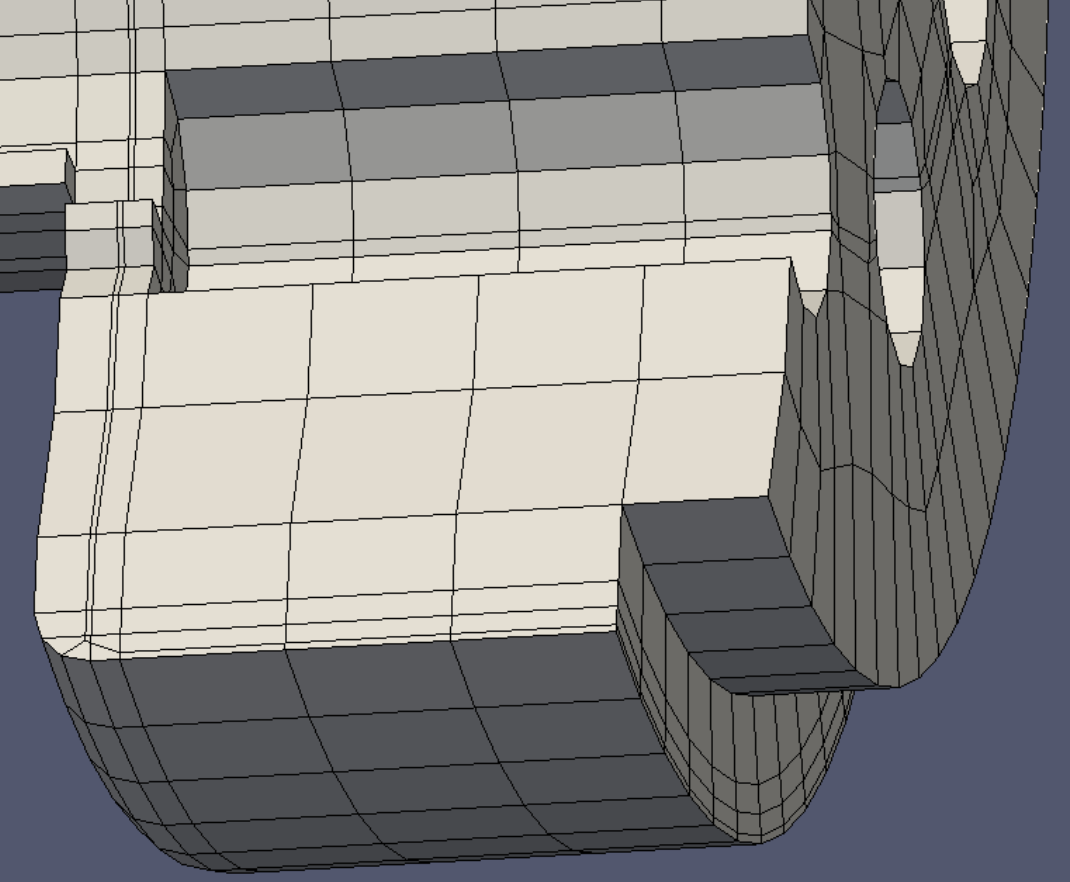
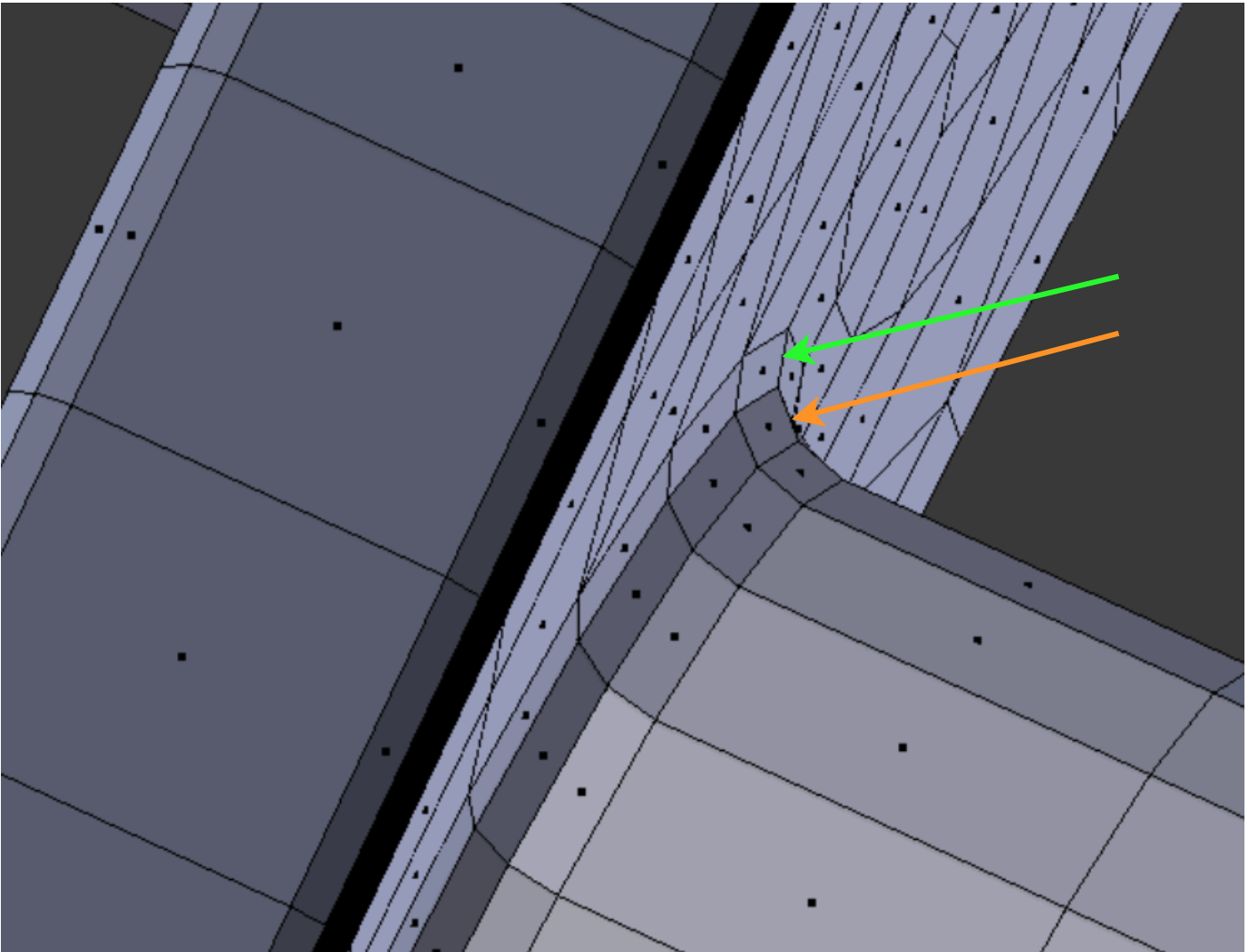
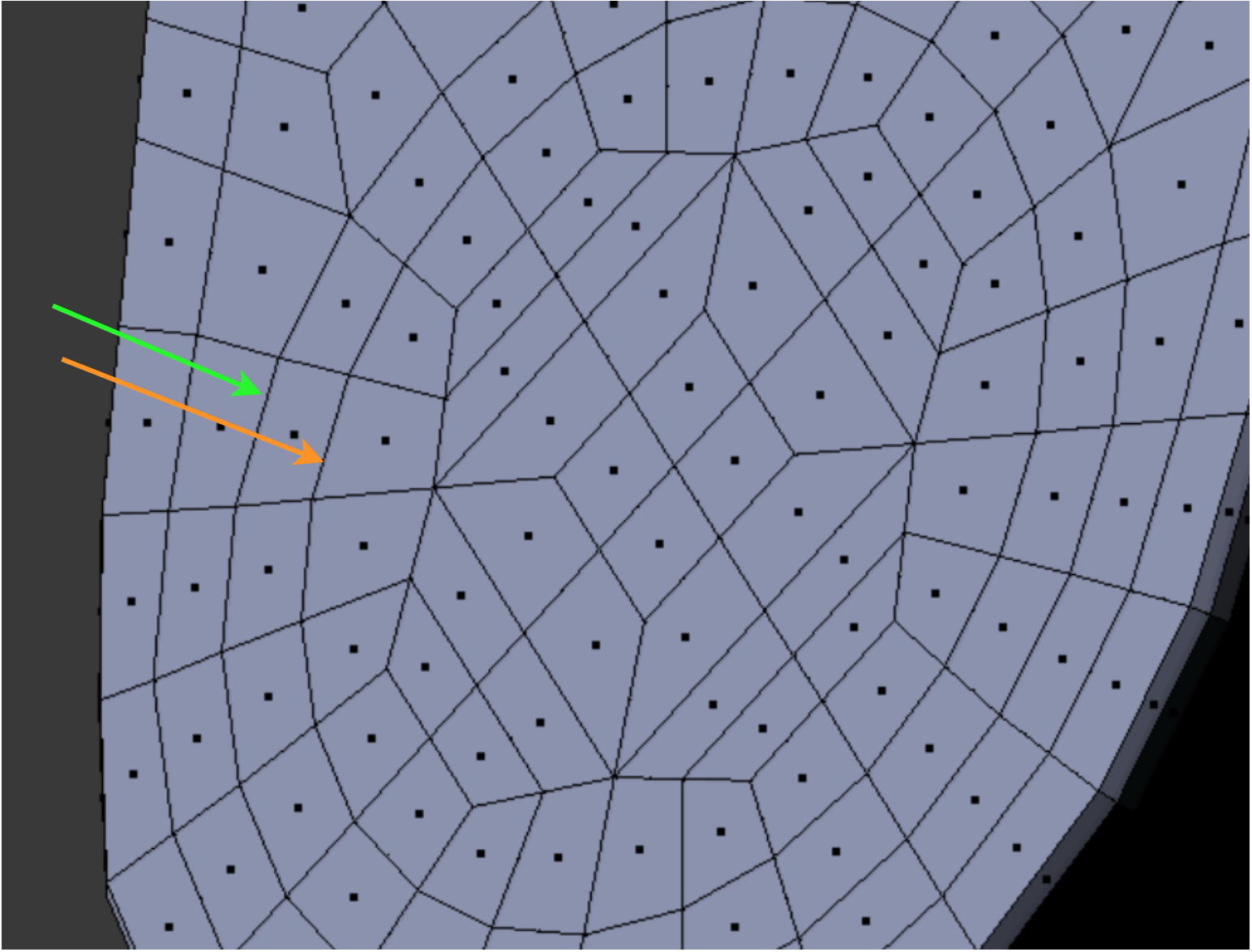
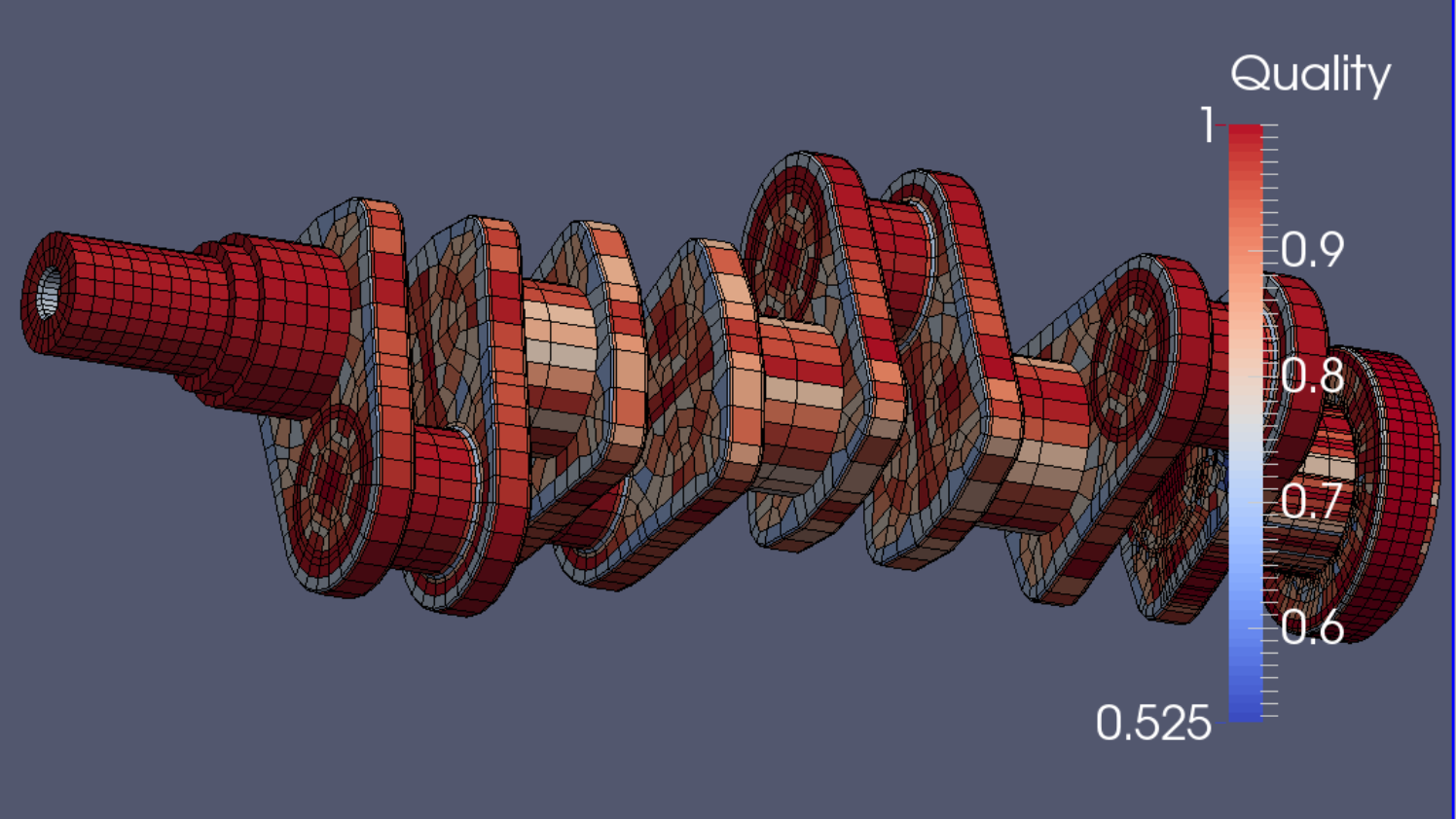
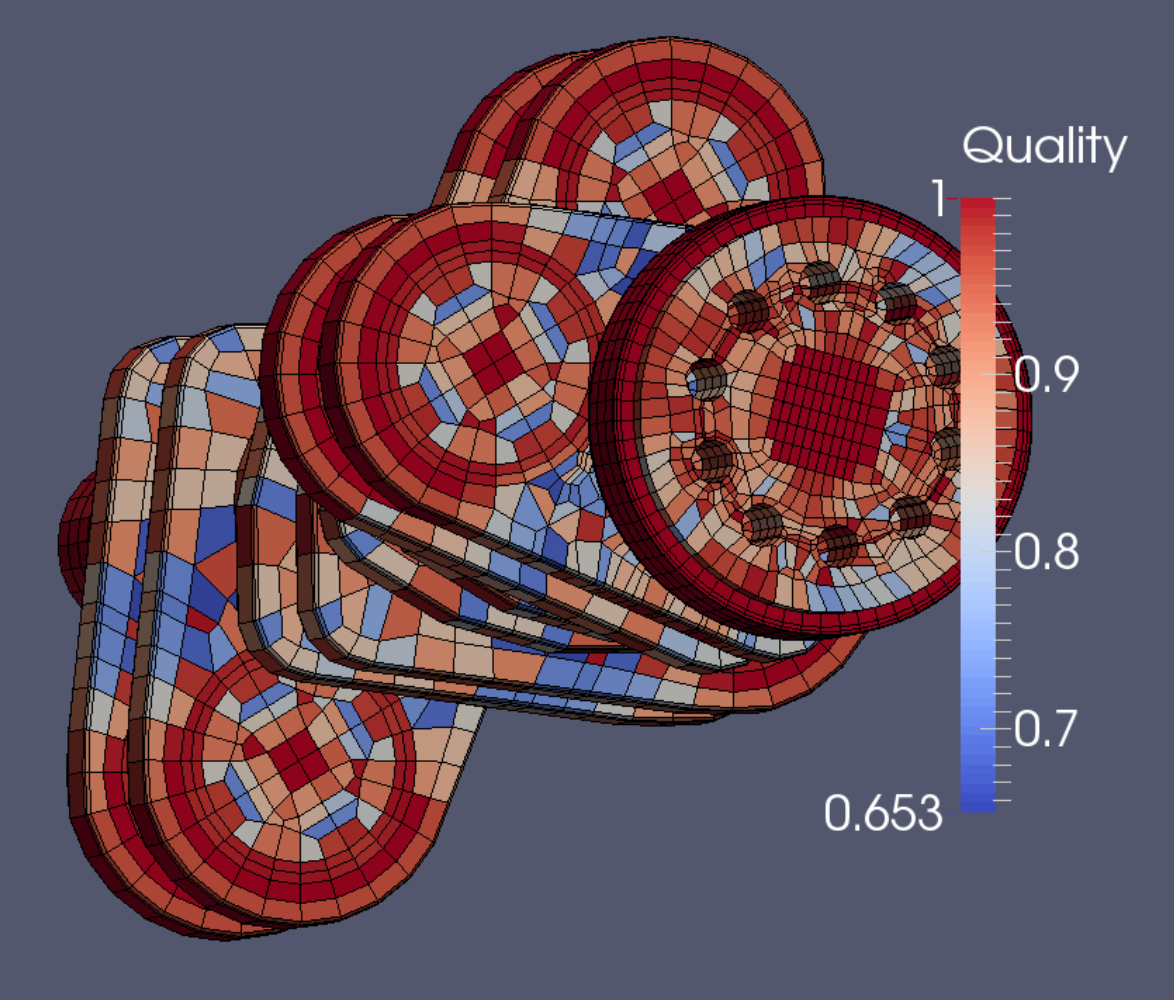
The quality for the Diagonal attribute is also satisfactory, with minimum value of 0.653.
The quality for the Scaled Jacobian attribute is shown for the completed crankshaft. With a minimum value of 0.525, the quality level meets Verdict standards.
The quality for the Scaled Jacobian attribute is shown for the completed crankshaft. With a minimum value of 0.525, the quality level meets Verdict standards.
